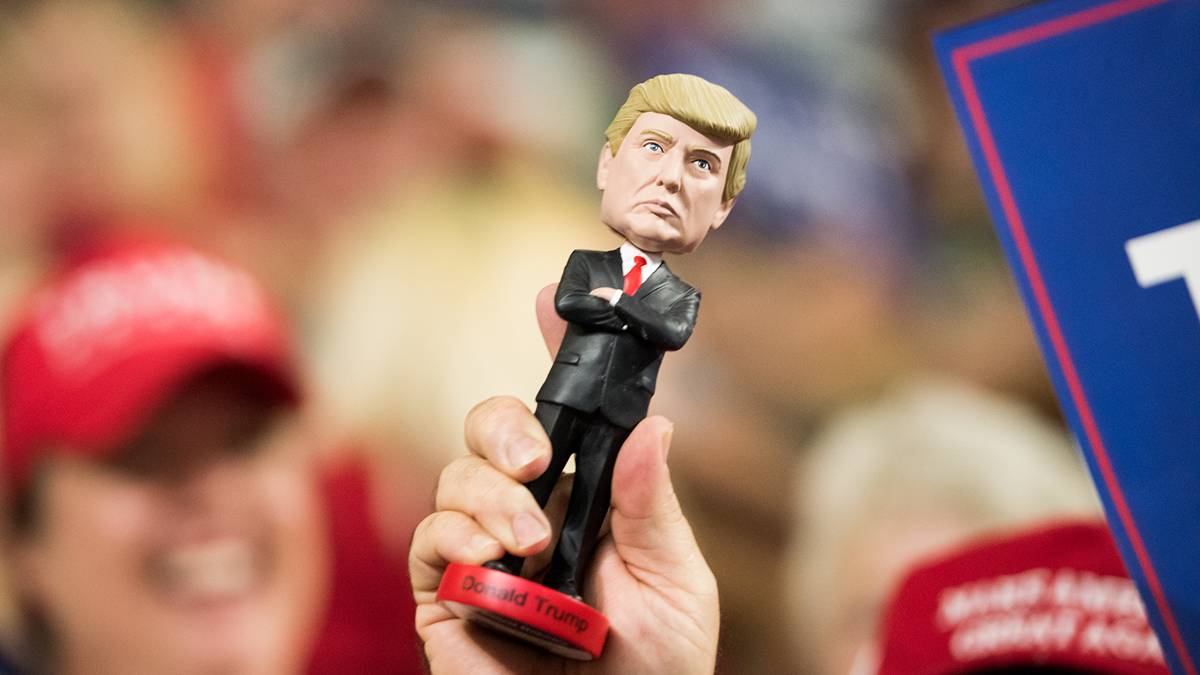Why gold’s Trump dump could be short-lived

Gold's suffered the Trump Dump so far, but experts think fundamentals still favour bullion. Pic: Getty Images
- Gold prices have come off record highs since Donald Trump’s election win over Kamala Harris on November 6
- But across his first term gold rose 55%
- Fund managers and analysts continue to think the fundamentals favour bullion
Donald Trump may appear as a force of nature, his re-election last month driving the US dollar and stock market to new highs.
But leading Australian fund managers and analysts say gold, sold off from record highs in the wake of Trump’s victory over Kamala Harris, will remain ascendant after the Republican firebrand enters the Oval Office on January 20 next year.
And they argue the forces behind that will be, counter to the imagination of Trump and his supporters, outside of the President elect’s control.
Already gold prices have rebounded once, rising above US$2700/oz and hitting a new Aussie dollar gold record in excess of $4270/oz thanks to the falling exchange rate, before a near 1.5% sell off on Friday on some US factory data showing lingering inflation. That sparked fears of a slower rate cutting cycle by the US Fed, though the market is betting on a 96% chance of a 25bps cut at this week’s US Fed meeting.
Sprott’s Edward Bonner said the post-election sell off was no surprise, with Republican wins since 1976 correlating with an average 4.54% 60-day decline in bullion and Democrat wins delivering an average 3.83% gain.
Trump’s last election win in 2016 saw an 11.64% 60-day loss for gold before rising again to record highs by the Covid-infected end of his presidency. By the end of Trump’s first term gold lifted 55%, second only in percentage terms to the eight year reign of George W. Bush (+220%).
Bonner says even with the pullback, the thesis for stronger gold and gold equities performance remains in tact.
“Since the U.S. election, we have seen consistent outflows from gold ETFs, not just in the U.S. but more broadly, including China. Recent hawkish statements from Federal Reserve Chair Jerome Powell on the slowing pace of interest rate cuts may have also contributed to the weakening of gold sentiment. Short-term, rising interest rates put pressure on gold prices since gold pays no interest, unlike bonds,” he explained.
“But my thesis has not changed; if anything, my conviction in favour of gold and gold mining equities has increased. I see the recent pullback as a healthy consolidation and have actively been deploying capital in anticipation of the next leg up.”
On the home front
Gold has quickly become a consensus bet this year for Australian fund managers, with rising prices and slowing inflation helping producers grow their margins.
As Victor Smorgon Group’s Cameron Judd told Stockhead recently, fundies are looking for gold miners doing as a gold mine should – printing cash.
The gold strategy portfolio manager’s confidence in bullion is still there in the face of a Trump win.
“I think the fundamentals for gold and when gold performs well historically are very strong at the moment and continue to get stronger,” he said.
“I think (Trump’s election) is more inflationary, which is one of the key principles of our gold investment strategy, which is that inflation continues to be very sticky.”
The Ari Fund’s portfolio manager Stephen Gorenstein views interest rate movements as the key driver for gold, rather than Donald Trump’s economic policies.
“The reality is under the last Trump presidency for the first two years gold was flat, it was up and down a little bit,” he said.
“But really what was driving that was a rising interest rate cycle that kept a cap on gold.
“Once the interest rates flattened and the interest rates started to then ease, gold prices took off. The Trump policy scenario actually had very little to do with gold.
“Our view is that the interest rate cycle is going to be the key driver.”
Watch the debt
Perth corporate advisors Argonaut joined a number of investment banks, retail banks and stockbrokers in tipping gold would hit US$3000/oz over the next year back in October.
Executive director and head of equity research Hayden Bairstow said at US$36 trillion of US government debt, the appetite for gold as a store of value will remain.
“I still gold will go to US$3000, probably in 2026, maybe back end of 2025,” he said.
“Nothing’s really changed and to be honest I thought Trump was going to win anyway.
“The reality is that the US national debt is in the mid US$30 trillions and tends to go up a fair bit every couple of days.”
Bairstow says even if Trump’s Administration cuts costs to bring a US$1.83tn 2024 deficit into balance, how the US pays down and services the debt is a bigger challenge.
“The debt servicing costs are now higher than what they spend on defence, which is just mind boggling, so it’s still going to be an issue for them,” he said.
If inflation runs at over the long term interest rate that will inflate asset values, bringing down the debt in real terms, Bairstow said. But that then poses risks for the holders of the US Government debt who are already trading out US dollar holdings for bullion.
“A lot of other central banks, particularly those that own a lot of this US debt, like the Chinese and the rest of the BRIC countries will continue to be buying gold,” he said.
“Not aggressively all the way up, they’ll be buying it in phases, but it will provide ongoing support I think for the gold prices into the next couple years.”
Do gold miners need higher prices?
Average costs across the gold sector continue to rise, if not at the rates they did in the years immediately following the Covid pandemic and the diesel price shock brought about as energy prices surged after Russia’s 2022 invasion of Ukraine.
According to Aurum Analytics, the average all in sustaining cost for Australia and New Zealand gold ops in the September quarter was up 5.3% QoQ to $2150/oz, up from $2041/oz in the June term.
But spot gold averaged $3694/oz in the same quarter, suggesting extremely strong margins for any unhedged producer.
“I like gold and it’s not because of the gold price,” Lion Selection Group CEO Hedley Widdup says.
His listed fund’s holdings are largely small gold miners and explorers.
“It’s because if the gold price stayed right where it is now, there are a lot of companies with very well established resource positions which are are in a very strong position to be able to either deal or build.”
The views, information, or opinions expressed in the interviews in this article are solely those of the interviewees and do not represent the views of Stockhead.
Stockhead does not provide, endorse or otherwise assume responsibility for any financial product advice contained in this article.
Related Topics

UNLOCK INSIGHTS
Discover the untold stories of emerging ASX stocks.
Daily news and expert analysis, it's free to subscribe.
By proceeding, you confirm you understand that we handle personal information in accordance with our Privacy Policy.








